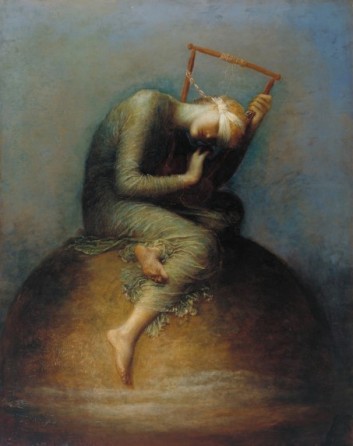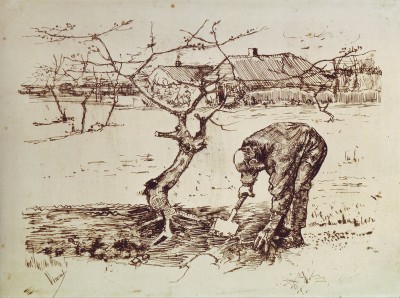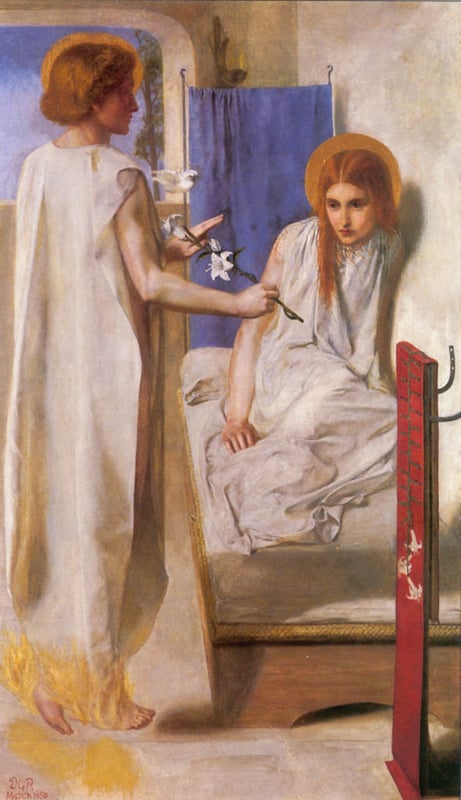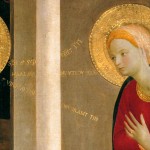 It’s terribly hard work to persuade people to hope. Especially in bleak times, but even in good times, we hide our broken hearts, failures, losses, believing in the power of evil and not wanting to be hurt again.
It’s terribly hard work to persuade people to hope. Especially in bleak times, but even in good times, we hide our broken hearts, failures, losses, believing in the power of evil and not wanting to be hurt again.
Lent is a growing season, an aspirational journey, and a walk through the valley of the shadow of death. Hope draws us on.
Jesus, preaching hope on the road, urges people to work for the vision of God, for a new world. But he runs into our resistance everywhere.
Luke recounts a time when some who came to listen to Jesus spoke up about Galileans who had been killed by Pilate while making sacrifices at the Temple altar. Pilate had mingled their blood with their sacrifices. Defiling them in death, as if murder alone were not enough.
And Jesus asked them, Do you think their suffering means they were worse sinners than anyone else?
Jesus reminded them about another terrible situation: the fall of the Tower of Siloam, a remnant of the old Temple, a place where men who didn’t like Roman rule worshiped in protest against the great Temple where Pilate and Herod held sway. Most folks blamed Pilate for the Tower’s fall. Eighteen people died in there. Do you think they were worse than all the others in Jerusalem? Jesus asked.
We all do. We have that deep fear in us when trouble comes – oh God, oh God, why are we being punished – when pain comes, we do not feel held in God’s love, but caught in God’s anger.
When the Pilates of this world show us their cruelty, we are intimidated by the power of their hate. Even though we know they are evil, even though we know hope is divine, we are more impressed by their evil than by God’s good.
Hope gives birth to life. Hope creates, using imagination and playfulness – and time. The thing about hope is, it takes time.
Hope does not create in response to pressure, or the insistence of the clock saying Hurry up! We’re out of time.
Evil, on the other hand, screams Time’s Up! into unexpected moments, even into bright days.
David Brooks, conservative political columnist for the New York Times and the PBS Newshour, laments a lack of optimism in the current primary campaigns. ‘To hear Sanders or Trump, Cruz and Ben Carson campaign,’ Brooks wrote, ‘is to wallow in the pornography of pessimism, to conclude that this country is on the verge of complete collapse. That’s simply not true. We have problems, but they are less serious than those faced by just about any other nation on earth.’
Merriam-Webster defines pornography as the depiction of acts in a sensational manner so as to arouse a quick intense emotional reaction.
It is this kind of arousal Brooks decries in American politics. Brooks writes, ‘People are motivated to make wise choices more by hope and opportunity than by fear, cynicism, hatred and despair.
Brooks praises Barack Obama for being a leader who never appeals to those passions, which bar the door to hope and opportunity.
Nor does Jesus appeal to those passions, not even as he enters Jerusalem, not even on Good Friday. Along the road of his life, Jesus dispels fear wherever he encounters it, and he challenges our cynicism and despair, urging us to give hatred no room.
When Jesus sees people knotted up and tense at the mention of the murdered Galileans and the Tower of Siloam, Jesus responds with a playful tale, creating a space in time where hope can rise:
A man comes to check on his fig tree (and everyone knows the fig tree is Israel’s symbol, the tree that lives for centuries, the tree that has many fruiting times each year, the tree that gives fruit and oil and shade and holds onto life.) But this fig tree has no fruit. Impatiently the man says to the gardener, ‘It’s been three years, and no fruit! Cut it down.’ But the gardener says, ‘Give it another year, and I’ll fertilize it and hoe around it, and then come and see.’
And who would this patient gardener be, if not God?
And what is this tale about, if it is not about growing hope?
Pessimism is pornographic in its curt declaration, Time’s Up!, and in its decision that fear, cynicism, hatred and despair are the order of the day.
Aroused to these reactions, we prodigal sons and daughters find ourselves living in a place unfit for human habitation. And we know we are a long way from home, and far off from Easter, a destination that opens to sorrow and to love, but never to cynicism, hatred, or fear.
Hope, wrote Emily Dickinson, in an era when Protestants were fascinated by hell, is the thing with feathers/ that perches in the soul/ and sings the tune without the words/ and never stops at all.
Preparing ourselves for Easter requires giving up our addiction to a dystopian view of our lives. Easter requires us to hoe around our own roots, to feed our hope and not our pessimism, and to bide our time, till what is fruitful in us can emerge and be seen.
________________________________________________________________________
Images:
1. Hope, by George Frederick Watts, 1886. Tate Gallery, London. Vanderbilt Divinity School Library, Art in the Christian Tradition.
2. Gardener Near a Gnarled Apple Tree. by Vincent van Gogh, 1883. Print. Vanderbilt Divinity School Library, Art in the Christian Tradition.










